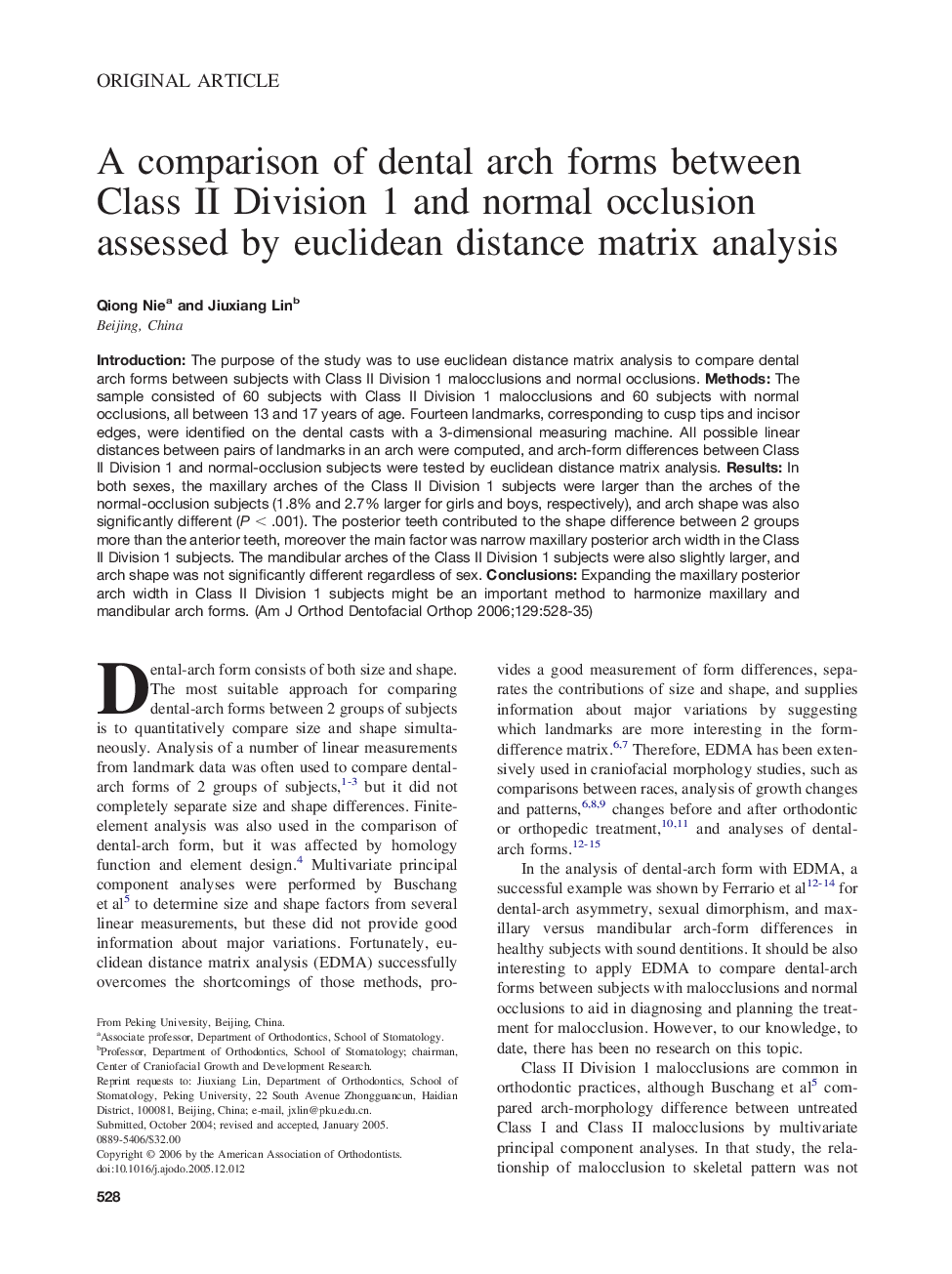| Article ID | Journal | Published Year | Pages | File Type |
|---|---|---|---|---|
| 3120502 | American Journal of Orthodontics and Dentofacial Orthopedics | 2006 | 8 Pages |
Introduction: The purpose of the study was to use euclidean distance matrix analysis to compare dental arch forms between subjects with Class II Division 1 malocclusions and normal occlusions. Methods: The sample consisted of 60 subjects with Class II Division 1 malocclusions and 60 subjects with normal occlusions, all between 13 and 17 years of age. Fourteen landmarks, corresponding to cusp tips and incisor edges, were identified on the dental casts with a 3-dimensional measuring machine. All possible linear distances between pairs of landmarks in an arch were computed, and arch-form differences between Class II Division 1 and normal-occlusion subjects were tested by euclidean distance matrix analysis. Results: In both sexes, the maxillary arches of the Class II Division 1 subjects were larger than the arches of the normal-occlusion subjects (1.8% and 2.7% larger for girls and boys, respectively), and arch shape was also significantly different (P < .001). The posterior teeth contributed to the shape difference between 2 groups more than the anterior teeth, moreover the main factor was narrow maxillary posterior arch width in the Class II Division 1 subjects. The mandibular arches of the Class II Division 1 subjects were also slightly larger, and arch shape was not significantly different regardless of sex. Conclusions: Expanding the maxillary posterior arch width in Class II Division 1 subjects might be an important method to harmonize maxillary and mandibular arch forms.
